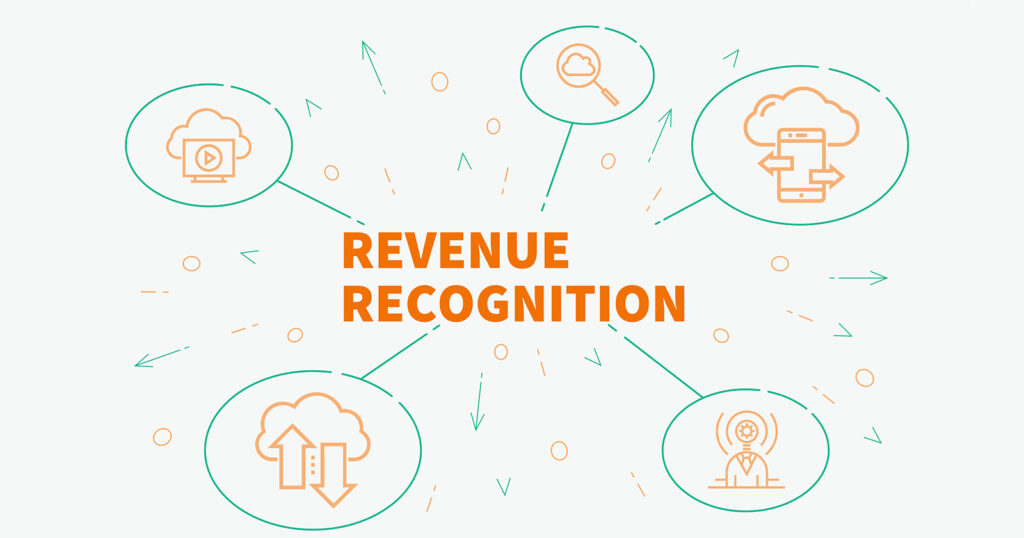Revenue recognition is yet another fundamental accounting principle that determines when and how a business should recognize its revenue from goods or services sold.
We’re going to cover what revenue recognition is, why it matters, and how businesses can properly account for it.

What is the Revenue Recognition Principle? The Definition
The revenue recognition principle is an important principle of accounting that states that revenue should be recognized as soon as it’s earned, not when cash is received.
In other words, companies need to recognize revenue when a service has been delivered or a product has been received by the customer.
Revenue recognition helps businesses report their income in the best way possible so stakeholders can understand when earnings took place when reading the financial statements.
The main goal of the revenue recognition principle is to promote financial transparency and ensure accurate reporting of a company’s income.
Applying the revenue recognition principle under Generally Accepted Accounting Principles (“GAAP”), it puts all businesses on the same playing field.
Stakeholders can easily compare business to business since revenues are recognized in a similar fashion when applying the accounting standards.
Key Takeaway: Revenue is recognized when it is earned, not when cash is collected under GAAP.
Is Revenue Recognition a Part of GAAP?
Revenue recognition is an essential part of the Generally Accepted Accounting Principles. It is a fundamental concept that must be understood by accounting professionals and a principle that all accountants learn in first-year accounting classes.
It is defined as the process of recording revenue when it is earned and not when cash or other assets are received. Essentially this is a key component of accrual accounting. Recording on a cash basis, when a cash payment is received is a violation of GAAP.
The basic idea behind revenue recognition is to match income with expenses for each period, thus providing users with accurate information about the company’s profitability.
Read More:
The Basic Accounting Equation – Simple but a Must Know
How to Apply Revenue Recognition: A Beginner’s Example
Let’s look at a simple example to start. Say you run a lawn care business and complete a landscaping job for Ms. Smith. You complete the job on August 17th, bill Ms. Smith for $490 and she pays you on September 9th.
You are going to recognize revenue on the 17th because you delivered your service and therefore earned the $490. The sample journal entry for August 17th would be as follows:
| Date | Account | Debit | Credit |
| August 17 | Accounts receivable | $490 | |
| Sales Revenue | $490 |
Later you will record the monies received.
| Date | Account | Debit | Credit |
| September 9 | Cash | $490 | |
| Accounts receivable | $490 |
Keep in mind this is a simple example of revenue recognition. Revenue recognition can get a lot more complex when you are dealing with:
- Accounting Standards Codification ASC 606 revenue recognition standard (recognizing contact revenue)
- Recognizing subscription revenues
- Independent contractor revenue recognition
Revenue Recognition in Practice

As we mentioned, in practice, the process of recognizing revenue can vary depending on the nature of a company’s business operations. For example, companies dealing with products may use a sales model where revenues would be recorded after goods have been shipped to customers.
On the other hand, businesses providing services may choose to recognize revenue once services have been completed and invoices have been sent out.
It is up to each business to develop policies for how they will recognize revenue based on their unique circumstances and industry guidelines but they still need to adhere to GAAP.
That being said, a software company will have more complex revenue recognition than most service companies which highlights how industries can drive how complex revenue recognition can be.
Advanced Topics on Revenue Recognition
Businesses, including small businesses and their owners, need to be aware of all methods and rules related to revenue recognition in order to maintain accurate financial records.
Every business owner should have an understanding of their revenue recognition and if they have specific questions, we urge you to connect with your accountant so you have a good understanding.
Not all revenue recognition is simple. Advanced topics on revenue recognition include methods like the completed contract method, and installment method.
Construction accounting and software can be their own beasts of accounting for revenue recognition.
Things to Remember with Revenue Recognition
First and foremost, businesses should remember that revenue should be recognized when products or services are delivered to customers, not when cash receipts occur.
This is essential for proper accounting since cash receipts may not always occur on the same day that a product or service is delivered.
Additionally, businesses must recognize revenue only after a certain trigger event has occurred, such as the completion of contractual obligations, delivery of goods or services. Revenue recognition hinges on when revenue is earned.
It’s also important for companies to understand their particular industry standards in terms of how they recognize revenue. For example, leasing companies and construction companies aren’t so straightforward.
Final Thoughts and Applying Revenue Recognition
Revenue recognition is a key concept that must be understood and applied in order to accurately manage revenue. Business owners should grasp it, even if it is the bookkeeper and accountants applying it for the financial statements.
To ensure success, it is essential to take the time to study the concept and then apply it in practice when using accrual basis accounting.



